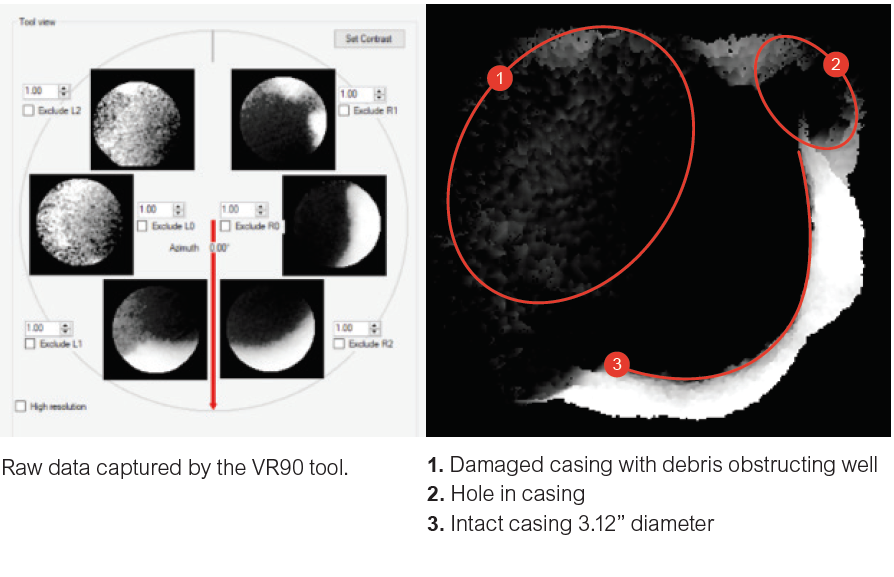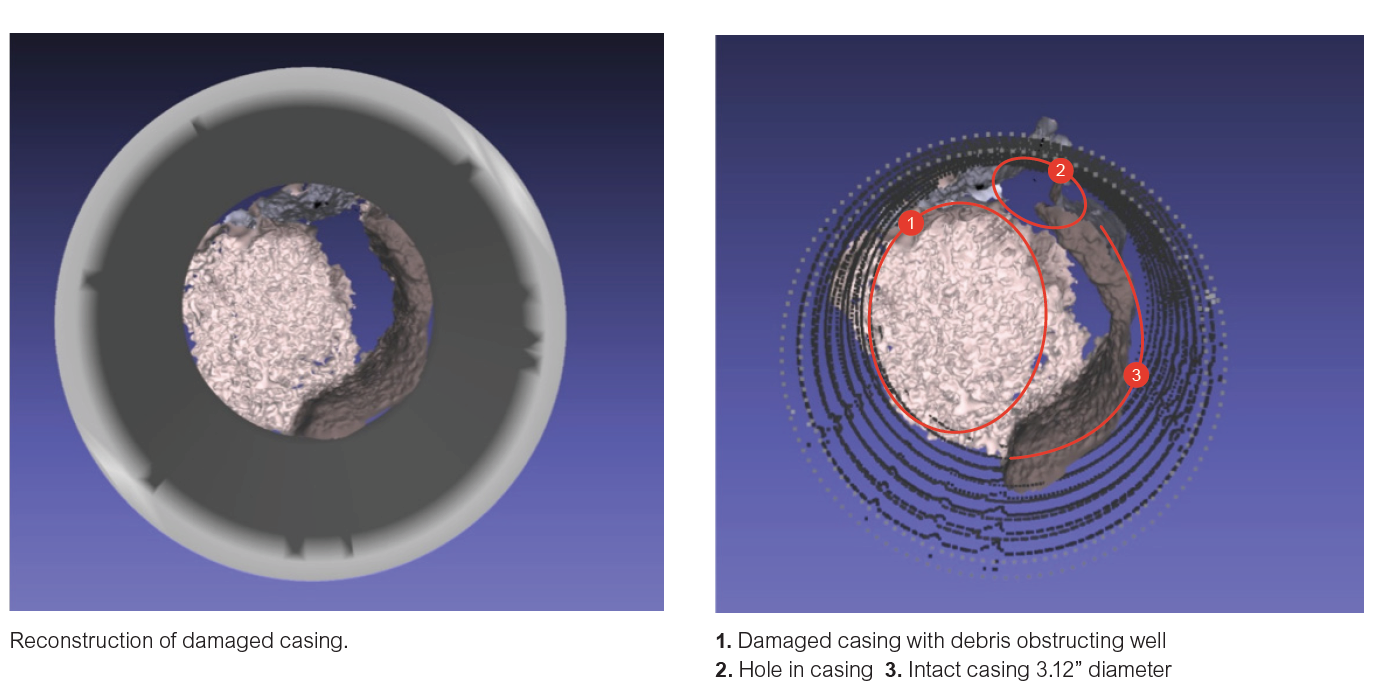Client Case Study
The Challenge
While attempting to set a plug during the abandonment of a well, the client encountered an obstruction before reaching the intended depth. They needed a fast way to reliably diagnose the cause of the obstruction and confidently determine a course of action. The client had used Visuray's VR90 downhole X-ray diagnostic service before and was familiar with its efficiency, reliability and cost savings, prompting them to call for an onsite evaluation.
Our Solution
Visuray mobilized its team and equipment to the well site within hours of the initial callout. Because X-rays can penetrate any production fluid, there was no need to waste time circulating, cleaning, or conditioning the well and the VR90 downhole X-ray diagnostic tool was immediately run in hole to 1,960 feet.
Real-time images produced at this depth showed a portion of the casing had collapsed and was obstructing the well. The VR90 tool's images also revealed a hole in the casing, which allowed debris to further obstruct the well. A dimensionally-accurate reconstruction of the damaged casing demonstrated that the diameter of the intact casing was about 3''.
Thus, less than three hours after the VR90 tool was deployed at the wellsite, the cause of the obstruction was determined to be partially collapsed and damaged casing, with the hole in the casing indicating that the integrity of the casing might be compromised. This diagnosis made it clear to the client that the plan to mill through the obstruction would possibly compromise the integrity of the casing further, and a safer course of action would be to simply plug the well above the obstruction.
Client Benefit
Visuray provided the client with a fast, reliable diagnosis of their obstruction without any costly or time-consuming preparation of the well. Visuray's VR90 downhole X-ray diagnostic service revealed the nature, dimensions, and state of the obstruction, allowing for a more efficient and cost-effective well intervention.
View Case Study PDF

